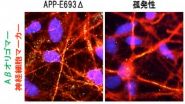(Press-News.org) PHILADELPHIA — Neuroblastoma, the most common malignant tumor of early childhood, is frequently associated with the presence of MYCN amplification, a genetic biomarker associated with poor prognosis. Researchers have determined that tumors containing MYCN amplification are sensitive to a new class of drugs, BET bromodomain inhibitors.
The researchers made this discovery in a preclinical study, which was funded in part by a Stand Up To Cancer Innovative Research Grant and was published in Cancer Discovery, a journal of the American Association for Cancer Research.
"BET bromodomain inhibitors are a class of drugs that many researchers are hopeful may offer a new therapeutic option for treating patients with certain cancers," said Kimberly Stegmaier, M.D., assistant professor of pediatrics in the Department of Hematology/Oncology at Dana-Farber/Children's Hospital Cancer Center in Boston, Mass. "The challenge has been identifying biomarkers that can help direct clinical translation of these drugs by pinpointing those patients with the highest likelihood of response."
To identify genetic biomarkers of responsiveness to BET bromodomain inhibitors, Stegmaier and colleagues screened more than 600 cancer cell lines with known genetic characteristics for sensitivity to a prototypical BET bromodomain inhibitor.
Using this high-throughput, cell-based screening process, the researchers found that neuroblastoma cells in which the MYCN gene was amplified were sensitive to BET bromodomain inhibitors.
"Neuroblastoma is a devastating childhood cancer, and only a minority of children with high-risk disease will be cured with currently available treatments," Stegmaier said. "Prior research has shown that MYCN amplification is common in neuroblastoma, but it has been an elusive drug target."
To further validate their findings, the researchers tested a BET bromodomain inhibitor, from the laboratory of James E. Bradner, M.D., at the Dana-Farber Cancer Institute, using cultured MYCN-amplified neuroblastoma cell lines and three animal models of MYCN-amplified neuroblastoma. Together, they found that the drug decreased levels of MYCN protein in cultured cells, and that this led to impaired cell growth and cell death. In each animal model, including a mouse model of neuroblastoma that is known to be resistant to many standard therapies, the drug was shown to have anti-tumor effects and to prolong survival.
"My Stand Up To Cancer grant, which focused on modulating difficult drug targets in childhood cancers, was instrumental to us being able to do this exciting work," Stegmaier said. "These types of studies are generally considered high-risk, particularly because they start with unbiased screening, and they are generally less likely to be supported by traditional sources of funding."
###
Follow the AACR on Twitter: @aacr #aacr
Follow the AACR on Facebook: http://www.facebook.com/aacr.org
About the American Association for Cancer Research
Founded in 1907, the American Association for Cancer Research (AACR) is the world's first and largest professional organization dedicated to advancing cancer research and its mission to prevent and cure cancer. AACR membership includes more than 34,000 laboratory, translational and clinical researchers; population scientists; other health care professionals; and cancer advocates residing in more than 90 countries. The AACR marshals the full spectrum of expertise of the cancer community to accelerate progress in the prevention, biology, diagnosis and treatment of cancer by annually convening more than 20 conferences and educational workshops, the largest of which is the AACR Annual Meeting with more than 17,000 attendees. In addition, the AACR publishes eight peer-reviewed scientific journals and a magazine for cancer survivors, patients and their caregivers. The AACR funds meritorious research directly as well as in cooperation with numerous cancer organizations. As the scientific partner of Stand Up To Cancer, the AACR provides expert peer review, grants administration and scientific oversight of team science and individual grants in cancer research that have the potential for near-term patient benefit. The AACR actively communicates with legislators and policymakers about the value of cancer research and related biomedical science in saving lives from cancer. For more information about the AACR, visit www.AACR.org. END
Biomarker may identify neuroblastomas with sensitivity to BET bromodomain inhibitors
2013-02-21
ELSE PRESS RELEASES FROM THIS DATE:
Life's tiniest architects pinpointed by Yale researchers
2013-02-21
If a genome is the blueprint for life, then the chief architects are tiny slices of genetic material that orchestrate how we are assembled and function, Yale School of Medicine researchers report Feb. 21 in the journal Developmental Cell.
The study pinpoints the molecular regulators of epigenetics – the process by which unchanging genes along our DNA are switched on and off at precisely right time and place.
"Our genome is like a landscape with lakes, mountains, and rivers, but it is not yet a community or a city full of buildings," said Haifan Lin, director of the ...
Research shows that coldness triggers northward flight in migrating monarch butterflies
2013-02-21
WORCESTER, MA – Each fall millions of monarch butterflies from across the eastern United States begin a southward migration in order to escape the frigid temperatures of their northern boundaries, traveling up to 2,000 miles to an overwintering site in a specific grove of fir trees in central Mexico. Surprisingly, a new study by scientists at the University of Massachusetts Medical School published in Current Biology, suggests that exposure to coldness found in the microenvironment of the monarch's overwintering site triggers their return north every spring. Without this ...
New study indicates avocado consumption may be associated with better diet quality
2013-02-21
IRVINE, Calif. (February 20, 2013) – New analysis of data from the National Health and Nutrition Examination Survey (NHANES) , a program of the Centers for Disease Control and Prevention (CDC), indicates that consuming avocados may be associated with better diet quality and nutrient intake level, lower intake of added sugars, lower body weight, BMI and waist circumferences, higher "good cholesterol" levels and lower metabolic syndrome risk. These results were published in the January 2013 issue of Nutrition Journal.
Specifically, the survey data (NHANES 2001-2008, ...
Early human burials varied widely but most were simple
2013-02-21
DENVER (Feb. 21, 2013) – A new study from the University of Colorado Denver shows that the earliest human burial practices in Eurasia varied widely, with some graves lavish and ornate while the vast majority were fairly plain.
"We don't know why some of these burials were so ornate, but what's striking is that they postdate the arrival of modern humans in Eurasia by almost 10,000 years," said Julien Riel-Salvatore, Ph.D., assistant professor of anthropology at CU Denver and lead author of the study. "When they appear around 30,000 years ago some are lavish but many aren't ...
Circadian clock linked to obesity, diabetes and heart attacks
2013-02-21
Disruption in the body's circadian rhythm can lead not only to obesity, but can also increase the risk of diabetes and heart disease.
That is the conclusion of the first study to show definitively that insulin activity is controlled by the body's circadian biological clock. The study, which was published on Feb. 21 in the journal Current Biology, helps explain why not only what you eat, but when you eat, matters.
The research was conducted by a team of Vanderbilt scientists directed by Professor of Biological Sciences Carl Johnson and Professors of Molecular Physiology ...
Bees attracted to contrasting colors when looking for nectar
2013-02-21
Flower colors that contrast with their background are more important to foraging bees than patterns of colored veins on pale flowers according to new research, by Heather Whitney from the University of Cambridge in the UK, and her colleagues. Their observation of how patterns of pigmentation on flower petals influence bumblebees' behavior suggests that color veins give clues to the location of the nectar. There is little to suggest, however, that bees have an innate preference for striped flowers. The work is published online in Springer's journal, Naturwissenschaften - ...
Scientists identify molecular system that could help develop treatments for Alzheimer's disease
2013-02-21
Scientists from the University of Southampton have identified the molecular system that contributes to the harmful inflammatory reaction in the brain during neurodegenerative diseases.
An important aspect of chronic neurodegenerative diseases, such as Alzheimer's, Parkinson's, Huntington's or prion disease, is the generation of an innate inflammatory reaction within the brain.
Results from the study open new avenues for the regulation of the inflammatory reaction and provide new insights into the understanding of the biology of microglial cells, which play a leading ...
The long shadow cast by childhood bullying on mental health in adulthood
2013-02-21
A new study shows that children who are exposed to bullying during childhood are at increased risk of psychiatric disorders in adulthood, regardless of whether they are victims or perpetrators.
Professor William E. Copeland of Duke University Medical Center and Professor Dieter Wolke of the University of Warwick led a team in examining whether bullying in childhood predicts psychiatric problems and suicidality in young adulthood. While some still view bullying as a harmless rite of passage, research shows that being a victim of bullying increases the risk of adverse outcomes ...
Early life stress may take early toll on heart function
2013-02-21
AUGUSTA, Ga. – Early life stress like that experienced by ill newborns appears to take an early toll of the heart, affecting its ability to relax and refill with oxygen-rich blood, researchers report.
Rat pups separated from their mothers a few hours each day, experienced a significant decrease in this basic heart function when – as life tends to do – an extra stressor was added to raise blood pressure, said Dr. Catalina Bazacliu, neonatologist at the Medical College of Georgia and Children's Hospital of Georgia at Georgia Regents University. Bazacliu worked under the ...
Modeling Alzheimer's disease using iPSCs
2013-02-21
Kyoto, Japan – Working with a group from Nagasaki University, a research group at the Center for iPS Cell Research and Application (CiRA) at Japan's Kyoto University has announced in the Feb. 21 online publication of Cell Stem Cell has successfully modeled Alzheimer's disease (AD) using both familial and sporadic patient-derived induced pluripotent stem cells (iPSCs), and revealed stress phenotypes and differential drug responsiveness associated with intracellular amyloid beta oligomers in AD neurons and astrocytes.
In a study published online in Cell Stem Cell, Associate ...



